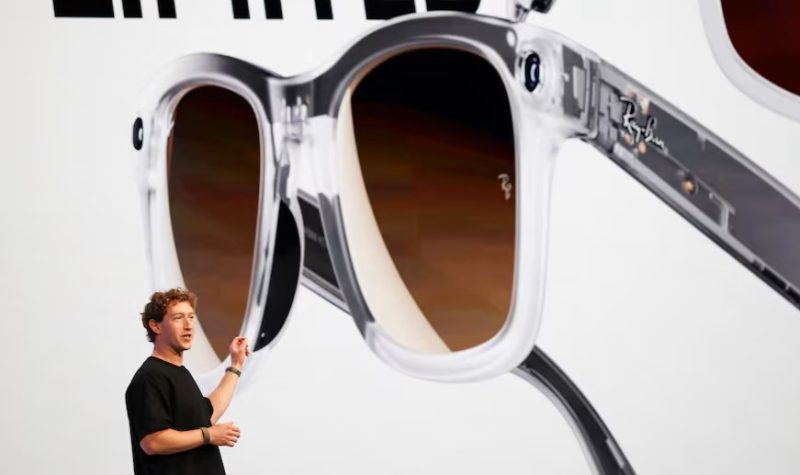Meta Platforms has launched its first consumer-ready smart glasses with a built-in display, seeking to build on the success of its popular Ray-Ban line. Unveiled at the company’s annual Connect conference in Menlo Park, California, the new “Meta Ray-Ban Display” glasses are positioned as a key step toward integrating artificial intelligence into everyday life. CEO Mark Zuckerberg presented the glasses alongside a new wristband controller, proclaiming them the ideal form factor for accessing “superintelligence” while staying present in the moment.
The new glasses, which start at $799 and include the wristband controller, feature a small digital display in the right lens for notifications and basic tasks. The wristband translates hand gestures into commands for responding to texts and calls. This launch is part of Meta’s broader, high-stakes effort to catch up to rivals like OpenAI and Google in the AI race, a pursuit that has involved a costly talent war and billions in spending on advanced AI chips.
The announcement comes as Meta faces increased scrutiny over its handling of child safety across its platforms, including recent reports about inappropriate interactions with AI chatbots and concerns over the effects of virtual reality on children. Alongside the premium Display model, Meta also unveiled a new $499 Oakley-branded pair aimed at athletes and updated its previous non-display Ray-Ban line with better battery life and a camera for $379.
While analysts do not expect the high-priced Display glasses to achieve massive sales immediately, they are viewed as a critical stepping stone. The technology is seen as a precursor to Meta’s ambitious “Orion” glasses, a prototype unveiled last year and slated for a 2027 launch, which Zuckerberg has described as a “time machine to the future.” Forrester analyst Mike Proulx noted that the glasses represent an everyday, non-cumbersome form factor with significant long-term potential for market growth.














